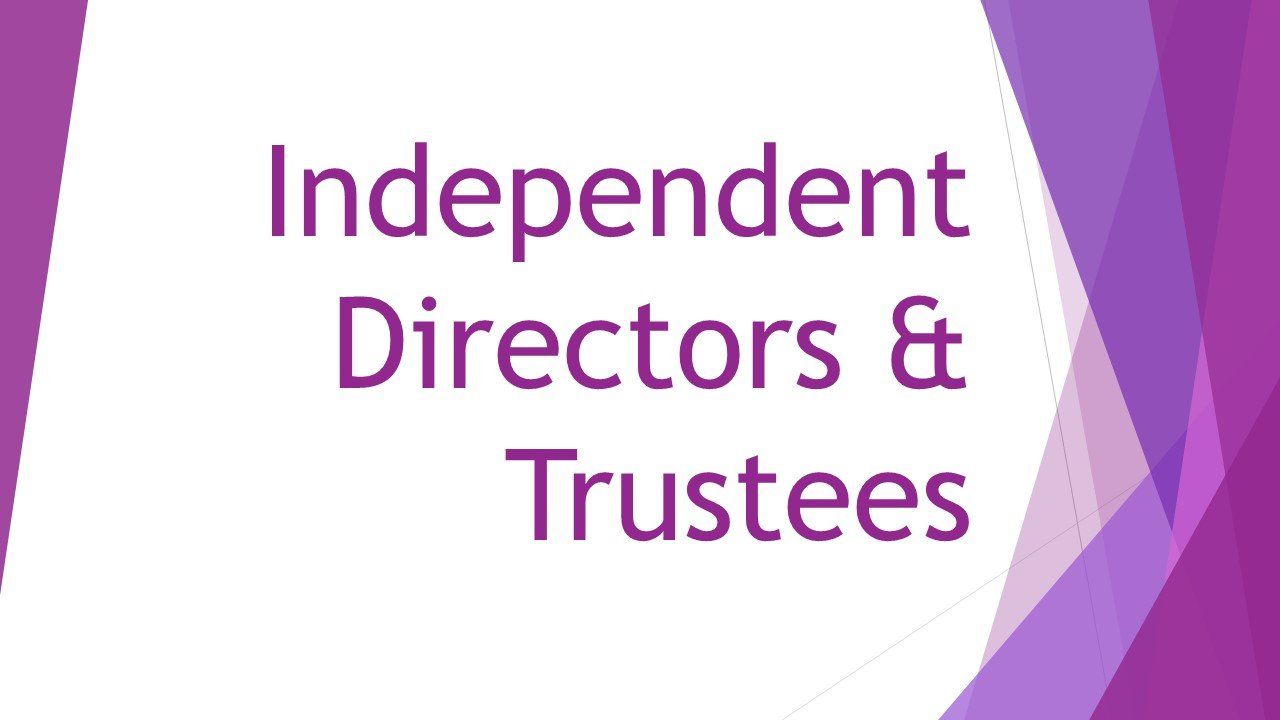The EO Trust Board
- by IDT
- •
- 26 May, 2022
This is an abstract of a few of the key findings from our recent pilot EO Survey, plus our own insights, focusing on the trust board.

IDT recently undertook a pilot survey of 9 employee owned organisations to identify any consistencies and best practice in how these companies are organised. The full report was published by Ownership at Work, the research arm of the Employee Ownership Association.
Using the findings from the research, as well as our own experience acting as the independent trustee with a broad range of IDT clients, we have written a series of articles providing further insights into best practice in action in EO companies.
In this article we focus on the trust board.
The
survey results evidenced that membership of the trust board, whilst reflecting
the size of the organisation in terms of trustee numbers, had a fairly
consistent combination.
- All respondents had a combination of founder, director/management, and employee members, and in most cases also an independent trustee on the trust board.
Founder members tend to have a trustee appointment tenor that reflects the duration of the related deferred payments or vendor loan term. This is often specifically reflected in the related documentation. In some cases, a specific founder is identified as the trustee. However, IDT has scenarios where the documentation has had to be subsequently amended to reflect the changed circumstances of the named founder trustee. Hence, best practice may be for documentation to reflect a ‘representative of the founders’ as being appointed as a trustee during the term of the loan, rather than a named individual.
Frequency of Trustee Meetings
Across the survey, and aligned to our own observations, the majority, though by no means all, trust boards meet on a quarterly basis. The survey specifically noted that:
- Trusts tended to align their meeting cycles to that of the operating board, and the majority met quarterly.
For example, where an operating board meets monthly, the trustee board may meet quarterly, aligning the date of the trust meeting to enable use of the same monthly metrics. This also reinforces the oversight role of the trustees, in support of the operating board and reflecting the fiduciary nature of the role.
For smaller organisations where all employees may already have insights and input into operational and strategic matters, trust meetings may be more infrequent, often semi-annually or annually. In these scenarios, the trustee meeting serves to elevate the oversight function to future direction, strategic priorities an non-operational matters.
Extraordinary meetings
Survey respondents reflected on their ad hoc trust meetings, confirming that these are held to cover a specific topic which is time sensitive so cannot be held over until the next formal trustee meeting.
Given the timing of the survey (held across late 2021 and early 2022) it is unsurprising that:
- ad hoc trust meetings had been held to discuss the impact of Covid on the business.
In general, we see ad hoc trustee meetings often being held to maintain a dialogue between the operating board and trustees, to discuss and agree significant matters so that they can be progressed or to reinforce operating board decisions. This latter, particularly when it applies to employee related matters, can provide the operating board with an avenue to seek challenge of their proposals, adjust them based on the discussions held with trustees and enable trustee support when it is communicated with all employees. This is particularly invaluable where there is not a employee forum in place, with the trustees, reflecting their fiduciary responsibility, reviewing matters on behalf of all employees as a collective rather than as individuals or teams.
Decisions
and Casting Votes
In line with UK company law, most articles for trust companies specify whether the chair of trustees has the casting vote when decisions are made.
- Most trusts worked to a majority decision, with the chair having casting vote, but there were examples where unanimous decision was the rule.
In practice, we have found it rare for decisions to be taken to the trustees in isolation and without a clear background, justification, or informed guidance. Hence, not only are trustee decisions themselves a rare event, a contested decision or one that requires a majority decision is even more rare.
Informing Trustees
Trustee information is rarely fully bespoke to the trustees, and is predominantly either the same or a subset of the information that is used at the trading board level:
- Company updates at trust meetings were the primary means of trustees maintaining oversight of the current health and future prospects of the business. In most cases, this took the form of bespoke reporting by the CEO/MD who joined the meeting for that section of the agenda.
Trustee meeting packs are often a sub-set or replication of trading board meeting packs. However, without the insights that personal input or an oversight focused overarching board report can provide, there is a risk that the trustee meeting simply duplicates the discussions held at the trading board meetings.
Having a representative of the trading board present to the trustees often serves to avoid a duplication of discussion across these two forums. It can also be a useful tool in enabling any director or manager level trustee to attend trustee meetings purely as a trustee, and not as a representative of the trading board, their data and their decisions.
Our experience is that the meeting packs of trust meetings are developed over time, reflecting the gradual understanding of the role of trustees, as well as the availability of relevant information to support this oversight role.
Duplicating board packs at the outset provides a beneficial way for trustees to understand the drivers of the business, especially those trustees who may be new to company reporting, such as employee representatives. Once mastered, the specifics of oversight on behalf of beneficiaries can be incorporated and prioritised. It is as this latter stage develops that the differentiation between trading company board meetings and those of the trustees start to become both clearer and more beneficial.
If you would like to discuss your trust board in general, our board and trustee support services, or our independent trustee proposition, please contact IDT on info@directorsandtrustees.co.uk
None of the respondents of the survey were clients of IDT at the time of the survey. Additional information in this article reflects the experiences of IDT with their clients and contacts.
The full report can be downloaded from the Ownership at Work website at: OAW-IDT-EOTs-In-search-of-best-practice-28-March-2022.pdf (ownershipatwork.org). Alternatively, you can obtain a copy of the report, or arrange a confidential discussion on the contents with IDT , by contacting us at: info@directorsandtrustees.co.uk


